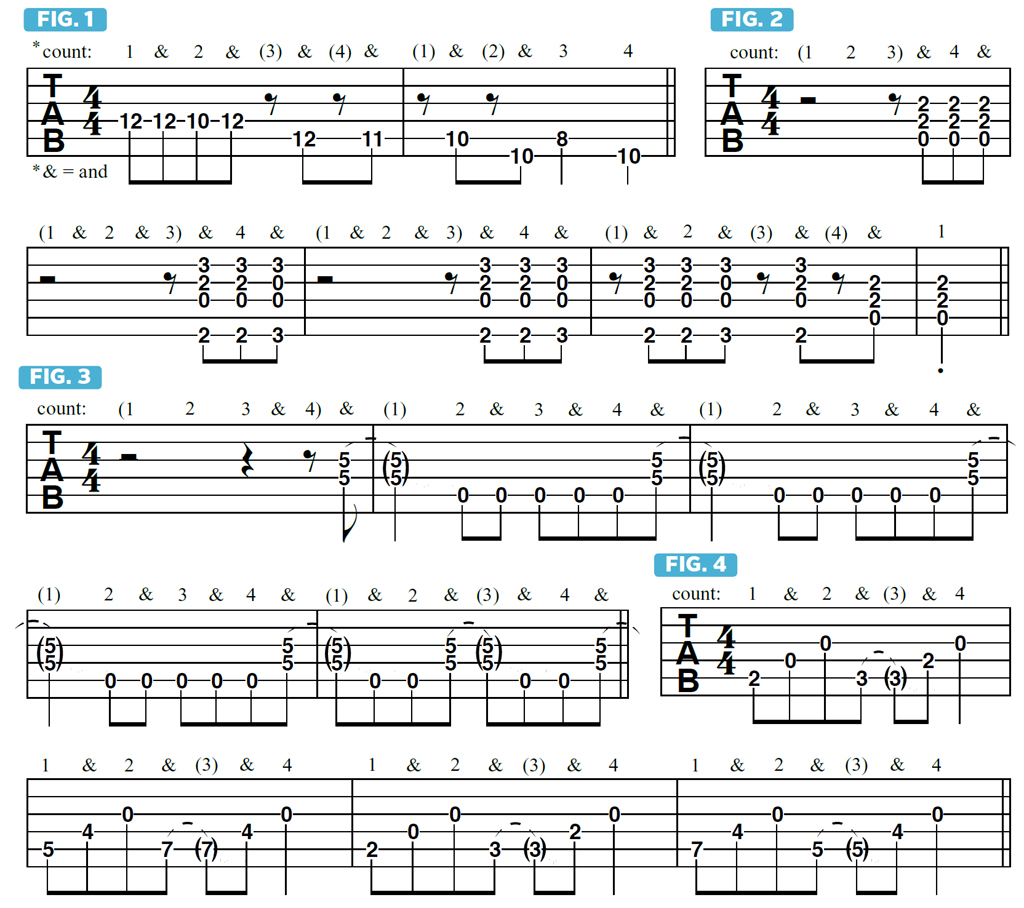Accelerate your rhythmic understanding with this lesson on eighth-note syncopations
We break down a widely used rhythmic tool, and how bands like Black Sabbath, AC/DC and Deep Purple use the concept in their riffs
Previously, we learned how a quarter note, which is the foundational counting unit of individual beats in 44 meter and most songs, can be evenly split, or subdivided, into two eighth notes, which across successive beats are counted “1 and, 2 and, 3 and, 4 and, 1 and, 2 and, 3 and, 4 and,” etc., with the “and” counts being called the eighth-note upbeats.
That eighth-note pulse, or “feel,” as musicians like to say, is the heartbeat of rock and roll and popular music in general, and this doubling-up of the basic quarter-note beat offers us an interesting variety of rhythmic possibilities, especially when used in conjunction with ties or rests, including eighth rests, which we learned about last time.
There are many musically appealing and exciting things you can do with eighth notes in the creation of melodies, riffs and grooves, especially when you also factor in various pitches and articulations. Countless well-known examples of great eighth-note-based riffs abound. Here are a few that come to mind.
The intro to the blues-rock classic Sunshine of Your Love by Cream features a repeating two-bar bass pattern not unlike that shown in FIGURE 1. Notice how the melodic contour, or shape, of the line during the first four notes, which, by the way, also brings to mind N.I.B. by Black Sabbath, naturally accentuates the fourth note, D, which falls on the “and of 2” (1 and, 2 and), and the way the next four notes, which all fall on subsequent upbeats and are separated by eighth rests on the downbeats, create a compellingly catchy rhythmic motif.
Emphasizing the upbeats, which are traditionally considered the weak parts of the beat, as opposed to the strong downbeats, is a device called syncopation, and it is a highly effective tool to use for adding a kick or push to a rhythm or melody and creating an energetic feeling of forward motion.
The iconic power chord intro and verse riff to Highway to Hell by AC/DC is another great example of a fairly simple but highly effective and driving eighth-note syncopation. Here, guitarists Angus and Malcolm Young employed rests to create long holes of silence between short, three-note bursts of strummed chords, similar to FIGURE 2.
As with the previous example, notice the preponderance of accented eighth-note upbeats here and how well this rhythm works when dramatically pitted against a straightforward and powerful eighth-note rock drum beat.
All the latest guitar news, interviews, lessons, reviews, deals and more, direct to your inbox!
Another effective way to create syncopation is to use ties instead of rests, and a fine example of this can be found in the chorus to Highway Star by Deep Purple, where guitarist Ritchie Blackmore plays a two-note chord stab on the “and" of 4 in each bar, which he then holds through the end of beat 1 of the following bar before pedaling on single eighth notes with the palm-muted open A string, along the lines of FIGURE 3.
This is a prime example of what’s called rhythmic anticipation, which is an early entrance of a note or chord that would otherwise fall squarely on the next downbeat. As an interesting comparison, if you were to take this phrase and shift everything forward, or ahead, by one eighth note, it wouldn’t sound nearly as driving, compelling or rocking.
The arpeggiated chorus progression to Photograph by Def Leppard offers another noteworthy example of an effective use of eighth-note syncopation, via anticipations and ties.
FIGURE 4 illustrates a similarly styled phrase. Notice how the lowest note of the second arpeggio in each bar is hit a half a beat early, on the “and" of 2, then tied and held over into beat 3 and allowed to ring together with the notes that follow on the D and G strings.
Over the past 30 years, Jimmy Brown has built a reputation as one of the world's finest music educators, through his work as a transcriber and Senior Music Editor for Guitar World magazine and Lessons Editor for its sister publication, Guitar Player. In addition to these roles, Jimmy is also a busy working musician, performing regularly in the greater New York City area. Jimmy earned a Bachelor of Music degree in Jazz Studies and Performance and Music Management from William Paterson University in 1989. He is also an experienced private guitar teacher and an accomplished writer.


